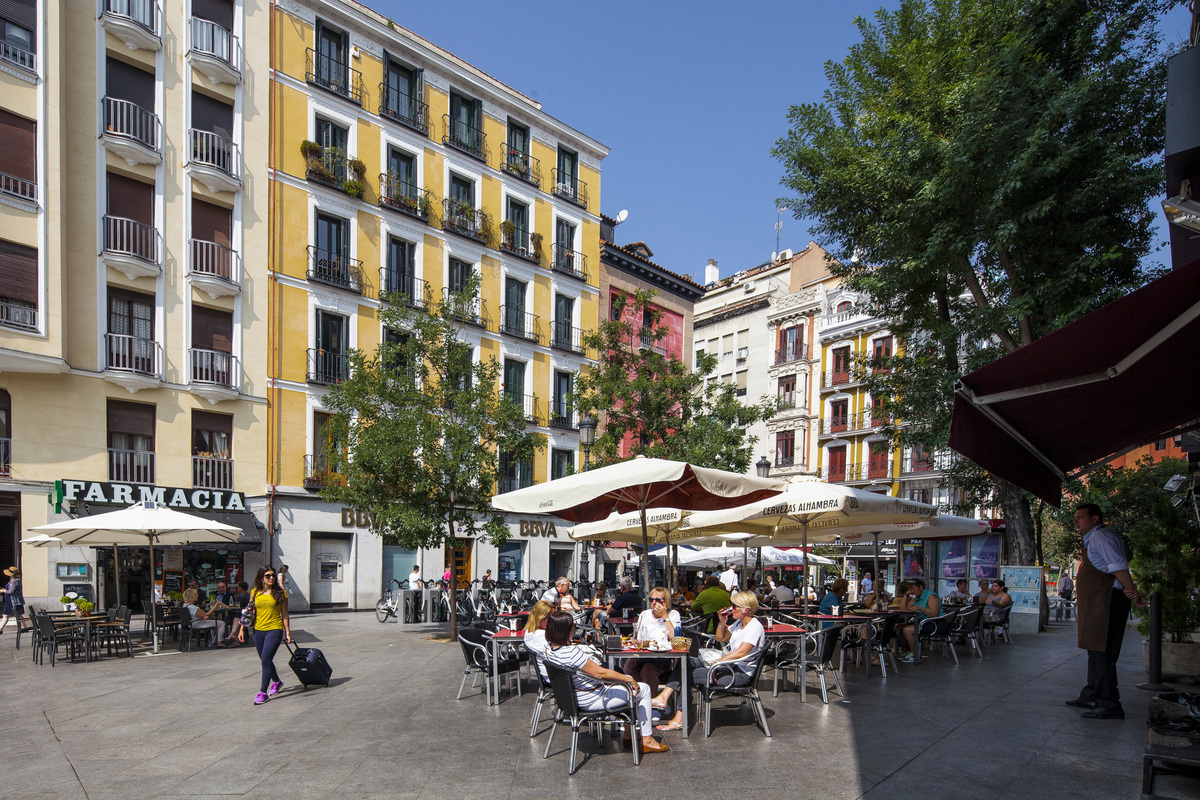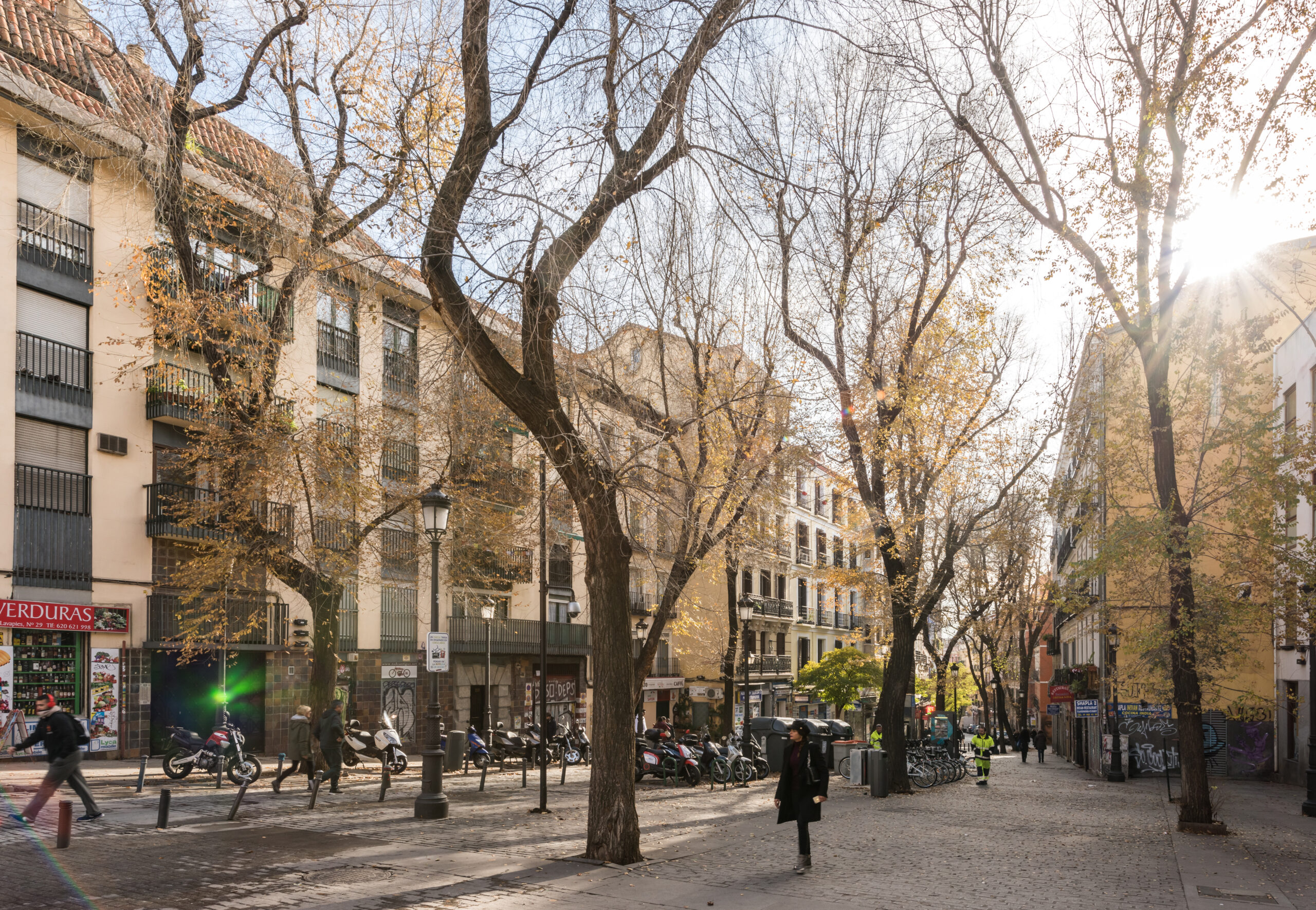If you own a property for tourist use in Madrid, you will be interested to know that
Chronology of a 2019 marked by disputes. May 2019.
The VUT sector is reeling in Madrid.
Many homeowners are wondering what to do or not to do with their homes, given the latest developments. In order to explain the current situation we summarise some information that may shed some light on what is going on.
ON THE DIFFERENT COMPETENCES SHARED BETWEEN THE CITY COUNCIL AND THE COMMUNITY OF MADRID
The Madrid City Council is responsible for urban planning and business activity licences.
The Community of Madrid is responsible for tourism. The existing denomination for houses that are rented out for tourism on residential land is VIVIENDAS DE USO TURÍSTICO (VUT). In order to register with tourism until now, a responsible declaration was made, a series of documents were handed in and then you were assigned a code beginning with VT followed by a number.
I HAVE A VT-NUMBER ASSIGNED BY TOURISM. SO, DO I HAVE A LICENCE?
Contrary to what many owners think, this number assigned by tourism has never been an activity licence, it is simply a registration that implies being registered in some way and a declaration of intent to comply with the general tourism regulations, such as filling in the passenger police forms, having complaint forms at the consumer’s service, among other requirements.
The Madrid City Council has the authority to issue activity licences.
POSITION OF THE MADRID CITY COUNCIL WITH REGARD TO VUT.
The Madrid City Council has been concerned for some time about the growing rise in housing prices and maintains that the uncontrolled increase in this type of housing is one of the direct causes of the increase in the price of housing, forcing citizens to move to other increasingly peripheral neighbourhoods where they can find housing at affordable prices.
Objectives:
To preserve residential use in the city centre.
Not to overcrowd the city with tourists.
To equalise the conditions of tertiary accommodation use to any other tertiary use such as commercial or offices.POSITION OF THE COMMUNITY OF MADRID WITH REGARD TO THE VUT.
To regulate this activity, which they consider cannot be prohibited.
Objectives: To improve the current regulations and professionalise this type of activity in order to offer all the guarantees to users, neighbours and owners.
CHRONOLOGY OF THIS 2019. WHAT IS HAPPENING?
06.03.19: Residents’ associations have the power to decide.
Royal Decree-Law 7/2019, of 1st March, on urgent measures in the field of housing and renting.
In addition to what is happening in Madrid you should know that on the 1st of March the government of Pedro Sánchez issued a decree law that came into force on the 6th.
Among other things, tourist accommodation will no longer be governed by the Law on Urban Leases. Communities of neighbours will be allowed to limit or veto the presence of this type of accommodation in a building. However, a qualified majority of three-fifths of the total number of owners (representing three-fifths of the shareholding quotas) will be required, giving them the possibility of increasing the community fees of the properties that rent out this type of accommodation by up to a maximum of 20%.
27.03.19: Madrid City Council prohibition of VUT.
New Special Housing Regulation Plan (PEH).
The city council, which had been considering for a long time to intervene in the matter, supported by its urban planning competences, finds a way to outlaw most of the tourist housing in the centre of the city.
On 27 March, Manuela Carmena managed, with the support of the votes of Ahora Madrid and PSOE, to approve a Special Plan for the Regulation of tourist flats. This special plan for the regulation of tertiary use in its accommodation class (PEH) sets limits that we detail below:
Temporary rentals longer than 90 days per year will need a special licence as it is a commercial activity. In order to obtain this licence for tertiary use of accommodation, it must have, as a distinguishing feature, an independent entrance from any neighbour or share common areas, in addition to meeting the requirements for tourist establishments.
Rentals of less than 90 days per year are considered to be collaborative economy.
The objectives of this plan for the city council:
Preserve residential use in the city centre.
Not to overcrowd the city with tourists.
Equalise the conditions of tertiary accommodation use to any other tertiary use such as commercial or offices.
This plan focuses on different areas of the city of Madrid, with greater restrictions in the more central neighbourhoods. It affects the entire interior of the M30 plus some neighbourhoods in the districts of Usera, Carabanchel and Latina, although it was divided into three areas according to the existing saturation of housing numbers per neighbourhood:
First ring: Sol, Palacio, Cortes, Universidad, Justicia and Embajadores.
Second ring: Argüelles, Gaztambide, Arapiles. Vallehermoso, Ríos Rosas, Trafalgar, Almagro, Castellana, El Viso, Recoletos, Goya, Ibiza, Niño Jesús, Pacifico, Atocha, Palos de Niguer, Acacias, Imperial, Chopera and Delicias.
In the first two rings, all dwellings wishing to obtain a licence must have a separate entrance from the rest of their neighbours (neither use lifts nor share common areas).
Third ring: Casa de Campo, Puerta del Ángel, Cármenes, San Isidro, Opañel, Comillas, Morcardó, Almendrales, Legazpi, Adelfas, Estrella, Fuente del Berro, Guindalera, Prosperidad, Ciudad Jardín, Hispanoamérica, Cuatro Caminos, Ciudad Universitaria, Bellas Vistas, Berrugiete, Castillejos, Nueva España, Valdeacederas, Almenara and Castilla.
Independent access will be required in this area when other tertiary uses are not permitted.
09.04.10: The Community of Madrid approves a new decree on tourist flats.
According to the executive of the Community of Madrid, “the main objective of this decree is to update the current one, improving it and ordering an activity that cannot be prohibited”.
After the previous decree suffered several blows by the courts, and contradicting the new Special Accommodation Plan of the Madrid City Council, only two weeks after its publication, it is considered VUT from the first day that it is rented to tourists and not after 90 days of rental.
According to this the owners of a Vivienda de Uso Turístico must, therefore, register their VUT with the Community of Madrid from the first day it starts to be marketed.
New requirements:
Certificate of Suitability
In a recent meeting we had with tourism, they confirmed that even if a flat is already registered in the tourism register, a new responsible declaration must be made and a Certificate of Suitability (CIVUT), which must be issued by a competent architect or technical architect, must be attached.
This certificate is supposed to “offer security to users, owners and neighbours” as it will certify that the property offered has heating, water supply, ventilation, fire extinguisher, emergency signage and evacuation plan of the building and the property.
More obligations for owners
Some of these measures are aimed at professionalising the sector and guaranteeing minimum quality and guarantees. Some requirements already existed but are reiterated in a special way in the new decree:
To submit to the Police and Guardia Civil information on the identity of the people staying in the accommodation.
Landlords must take out civil liability insurance, have complaint forms, have information with telephone numbers and addresses of emergency and health services in at least two languages.
Owners must inform tourists of their rights, duties and rules of coexistence to avoid misuse of these services.
Square metres per guest
The maximum number of people accommodated is fixed according to the number of useful square metres of the dwelling.
Dwellings of less than 25m2 useful: maximum 2 people.
Between 25-40 useful square metres: up to 4 persons in at least two habitable rooms.
For every additional 10 m2 of usable floor space in at least one more independent living space, two additional persons are allowed.
From this date, 9 April, a period of six months is given to adapt the VUTs to these new regulations.

CONCLUSIONS
In short, and regardless of opinions for or against, tourist accommodation in Madrid is once again at the mercy of the constant fight between two organisations that cannot reach an agreement, and there seems to be no attitude towards achieving it.
It is necessary to look for solutions beyond the courts, with tourism professionals in the field of accommodation and town planning who can work together to create a sustainable and legally sound model for all parties. At this point we believe that a negotiation between the two institutions would be of vital importance, really going into the matter in depth and finding areas of coexistence.
We particularly think that it is necessary to take some kind of measures in view of the current situation and the uncontrolled number of dwellings for tourist use, which also affect the price of long-term rental housing.
We do not prohibit it, as the market demands this type of property as an alternative offer and going against the trends of society does not seem to be the solution.
Who has not chosen such a product at some point in their travels? Even the most demanding clients will find a “temporary home” to suit them. There is something for all tastes, segments and pockets. It is a social need that is here to stay.
The offer is very heterogeneous and there is no real quality control by official bodies to sift out the offer that does not benefit the quality of tourism in the city.
Parallel to the prohibitions or not of this type of rentals, the situation that has been occurring in the sector in recent years in Madrid is a greater supply of properties for tourist use and the results in terms of profitability have been decreasing, given the competition that has been increasing exponentially every year. We have seen average prices fall in favour of higher occupancy. The sector itself is cannibalised by supply/demand alone.
We understand that for the communities of neighbours it can sometimes be a problem of coexistence, so we believe that a series of obligatory practices should be established within the regulations or the statutes of the communities, which should be extended to the users of these properties, to ensure correct coexistence with the communities of neighbours (at the risk of losing a deposit, for example). Let’s make professional the one who rents and does not put limits to his tenants.
If what we want to ensure is that the product has quality, that “suitability” is not only defined by architectural parameters but by quality standards in terms of hospitality and accommodation. These new tourism measures seem to us to be a step forward for the professionalisation of the sector, although there is still a long way to go. Since 2014 we have gone through all kinds of certificates that have been repealed since then, such as the certificate of habitability, plans endorsed by an architect or competent technician…
We understand that in Madrid there is a price problem to access rental housing. So rather than prohibiting, we believe that tax incentives for long-term rental housing in the most affected areas such as central Madrid can help to convert a lot of “dying tourist housing” into a good option for both owner and tenant.
In the meantime, we have to wait for the resolution of the courts, and in the meantime, the municipal elections on 26th May, which could give a twist to this issue. We will remain vigilant.
